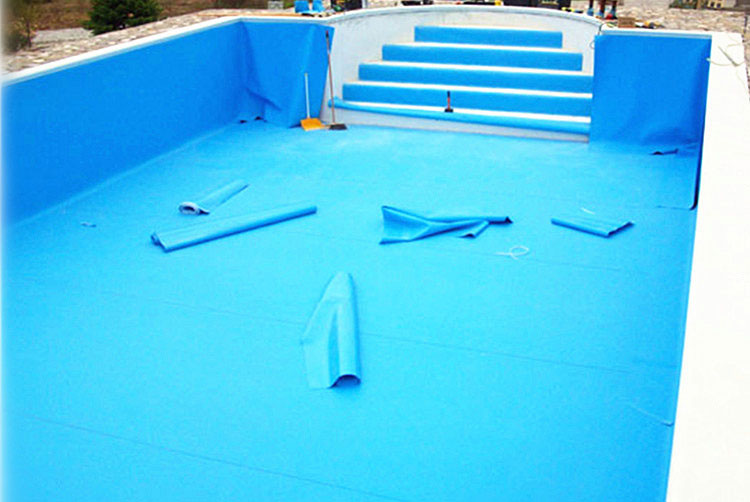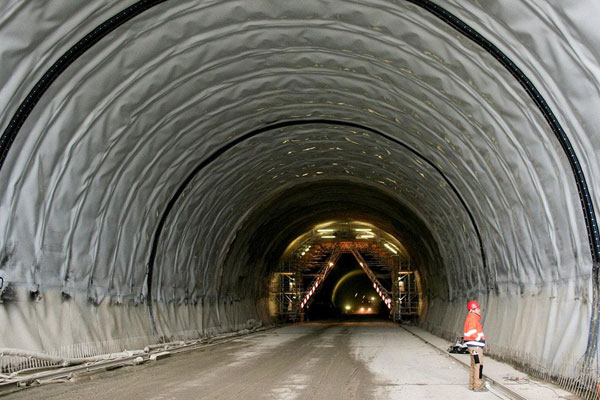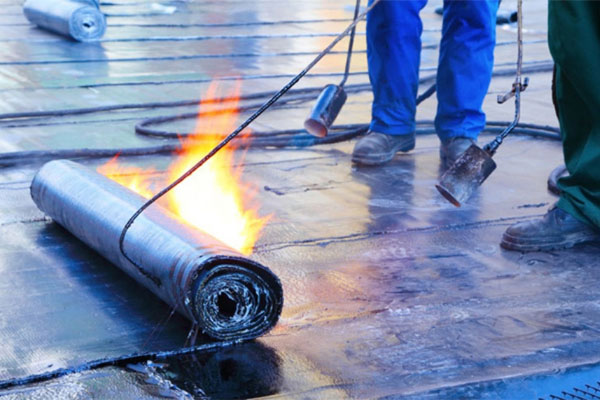Waterproofing is crucial in protecting a building and ensuring that the structure is usable for generations yet it is the most neglected process. The long term value of waterproofing is highly economical and sustainable by nature. Waterproofing membranes are used in a host of applications including roofing, walls, building decks, basements, balconies, bridge decks, foundation, parking areas, water tank linings, and tunnels. Increasing consumer awareness regarding the benefits of waterproofing and new materials are expected to augment the demand over the next few years.
Why is waterproofing vital?
Adding new zeal to buildings: Correctly placed waterproofing measures helps in reducing the moisture content of the building, which helps in having a comfortable stay. It also adds hygiene to the infrastructure. These measures can be done when the building is in the construction phase. If we delay it for sometime later or when the project is finished, it will not fit in properly.
Long Term Saving: Waterproofing is an investment that will save a lot of money in the future. Just as it is important to choose the correct painting process in the beginning, waterproofing too is a process that is completed for a better future.
Solidifying the interiors: During construction, the inner parts of the building are exposed to atmospheric elements. The foundations, insulation and frames are the most prominent parts of the building that may get damaged. Waterproofing may prevent this damage from occurring in the first place, and promote your infrastructure with a healthy and strong living.
Avoid basement flooding: Basements are the most vulnerable places for water to seep inside. The soil beneath the floor soaks the water and then enters the building through the cracks. The water once it enters the concrete, will lead to mould formation and flooding. During winters, the situation may worsen as the water may freeze, which will make the foundation expand, and the entire basement will be unsafe to stay in. It is important to seal off the moisture when the basement is being built. Make sure you protect the foundation of your building as it will impart stability to your structure.
Different areas of application of waterproofing membrane;
The construction industry has had technological advances in waterproofing materials, including integral waterproofing systems and more advanced membrane materials. Integral systems such as hycrete work within the matrix of a concrete structure, giving the concrete itself a waterproof quality. Discussed below are a few of the areas of application of waterproofing system.
Bridge Deck Waterproofing;
A modern mix of membranes, coatings, sealants, and waterstops are used to help these structures safely carry traffic for as long as possible. While all parts of a bridge-from the footings and piers to the surface of the road deck-use specialty products to keep water out, this article will focus on waterproofing the road deck. Layers of Protection For the vast majority of bridges and overpasses, the bridge deck is built as two separate layers. The lower structural deck is typically high-strength, steel reinforced concrete designed to last the life of the bridge. The upper deck, or wear surface, is designed to be replaced every few years.
Most bridges built in recent decades use epoxy-coated rebar instead of plain red iron. Sacrificial anodes are attached to the rebar mats for cathodic protection-so that naturally occurring electrical currents will erode the anode and not the bridge steel. After the structural deck is in place, it is sealed with spray membranes, sheet goods, or some combination of the two for additional protection. Finally, after the actual road surface is in place, an additional layer of water-repellant sealer is applied.
To increase the durability of reinforced concrete bridges, all concrete movement and construction joints, plus the bridge decks have to be waterproofed to prevent serious damage to the concrete, or to the embedded steel reinforcement. Due to dynamic loading, the bridge decks must be protected with elastic, crack-bridging systems to accommodate any movement and maintain the protection. Some of the common advantages of this system are: Elastic, crack-bridging properties, especially at low temperatures, Resistance to chlorides and automotive chemicals such as fuel, oils and hydraulic fluids., Easy to install and accommodate variations in level and substrate conditions, Fast application to reduce traffic closure times.

Swimming Pool Waterproofing;
This system provides the waterproofing of swimming pools or water tanks, both external and internal. By the use of two-component elastic, liquid waterproofing membrane, used in combination with Safety Joint Roll, an elastic band for the treatment of critical areas such as horizontal and vertical joints and angles, and Polites, a reinforcement fibreglass mesh characterised by the presence of special anti-floating wings.
As finishing for the waterproofing layer thus obtained it is used the epoxy coating, Swimming, a liquid finishing alternative to the common tiles or mosaics, to be applied directly onto the waterproofing layer. As an alternative to the epoxy finishing, the waterproofing layer can be easily covered with ceramic tiles and all other coatings traditionally used for swimming pools. Some of the common materials for this type of waterproofing are, epoxy resin, elastic tape, glass fibre armor, concrete membrane, epoxy paint etc.

Roof Waterproofing;
Efficient waterproofing of roofs and terraces can be achieved by adopting proper construction practices. It is essential that no rainwater stagnates on the roof. A proper slope and adequate number of drainage outlets can achieve this. Roof waterproofing is one of the essential steps of roof care. One should remember that waterproofing of flat roofs and waterproofing of pitched roof need different materials and different method of installation.
Quality of roof waterproofing influence on its insulation, security and exploitation of the entire roof. Don’t forget that moisture can also appear in the form of steam collected in a roof space, not only from the outside. You should consider this while choosing the waterproofing type. There are the following roof waterproofing systems according to the method of their use: waterproofing perforated film (hydro barrier), anti-condensate film, polymer membranes, hydrophilic rubber; surface waterproofing (acrylic, bitumen, silicone rubber, polyurethane mastic, etc), sprayed waterproofing materials (poly urea, acrylic formulations, the liquid rubber, etc), injecting materials (polyurethane, silicate resins, cement, emulsions, etc), penetrating materials.

Dam Waterproofing;
Dams are constructed for different purposes, but all of them have the target to store water. In countries with sufficient water the gained water is used to produce electric energy, in dry countries the water serves as drinking water or for irrigation of agricultural areas. Loss of water always means a reduction of productivity and may even endanger the base of existence of the population.
Only earth dams had received a watertight core but a great number of concrete dams are loosing water through cracks. There are different technologies to repair the concrete face of the dam but one of the most reliable and economical is the application of a waterproofing geomembrane. The choice of geomembrane and the way of fixation for the waterproofing system is a very important issue to receive a long living water tightness of the dam.
Waterproofing geomembrane systems are used for waterproofing of dams at the to restore watertightness to the entire face, or at leaking zones, or at cracks. Some of its benefits are: stop water infiltration, bridge joints and large cracks, prevents the formation of uplift pressures, provides freeze/thaw protection to the face, assist in retarding alkali-aggregate reaction (AAR) etc.

Tunnel Waterproofing;
Tunnel waterproofing is one challenging work undertaken. This type of waterproofing systems are faced with very strict requirements regarding durability, exposure, sustainability, and stress conditions. For waterproofing in tunnels or underground structures, it is important to consider the entire system rather than the individual waterproofing layers. With respect to the durability of underground structures, the ingress of water is usually the most important factor to be considered.
The basic design of waterproofing systems in Tunnel construction is typically of two types, namely Drained system and Pressure system. The drained system allows the water to channelize and hence drain out of the system, also commonly known as the Umbrella system. On the other side, the pressure system holds the water behind the membrane for a perpetual period. The waterproofing membrane relies on various components that need to be compatible with each other and applied in the correct sequence to give a desired result. Different types of tunnel waterproofing system includes Cementitious Waterproofing System, Hybrid waterproofing system, Liquid waterproofing system, Panel waterproofing System, The spray-on waterproofing membrane system, Membrane waterproofing system and The epoxy Liner waterproofing system,

Basement Waterproofing;
Basement waterproofing involves techniques and materials used to prevent water from penetrating the basement of a structure. Waterproofing a basement that is below ground level can require the application of sealant materials, the installation of drains and sump pumps, and more. The spaces of basements are particularly prone to wetness and moisture development. Water in the soil causes hydrostatic pressure to be exerted underneath basement floors and walls. This hydrostatic pressure can force water through cracks, which can cause major structural damage as well as mold, decay, and other moisture-related problems.

Different types of basement waterproofing methods includes Interior sealants, Interior water drainage, Exterior basement waterproofing, Interior basement waterproofing and Foundation crack injections.
Conclusion
The right waterproofing system should be used according to their area of specification. That is, there are certain types of surfaces where a crystalline waterproofing system is more suitable than the flexible membrane waterproofing system and vice versa. Though the products are of utmost quality there are fewer chances that you get the desired results. Use the products before the expiry period. After which the application would not bring any desired results.


